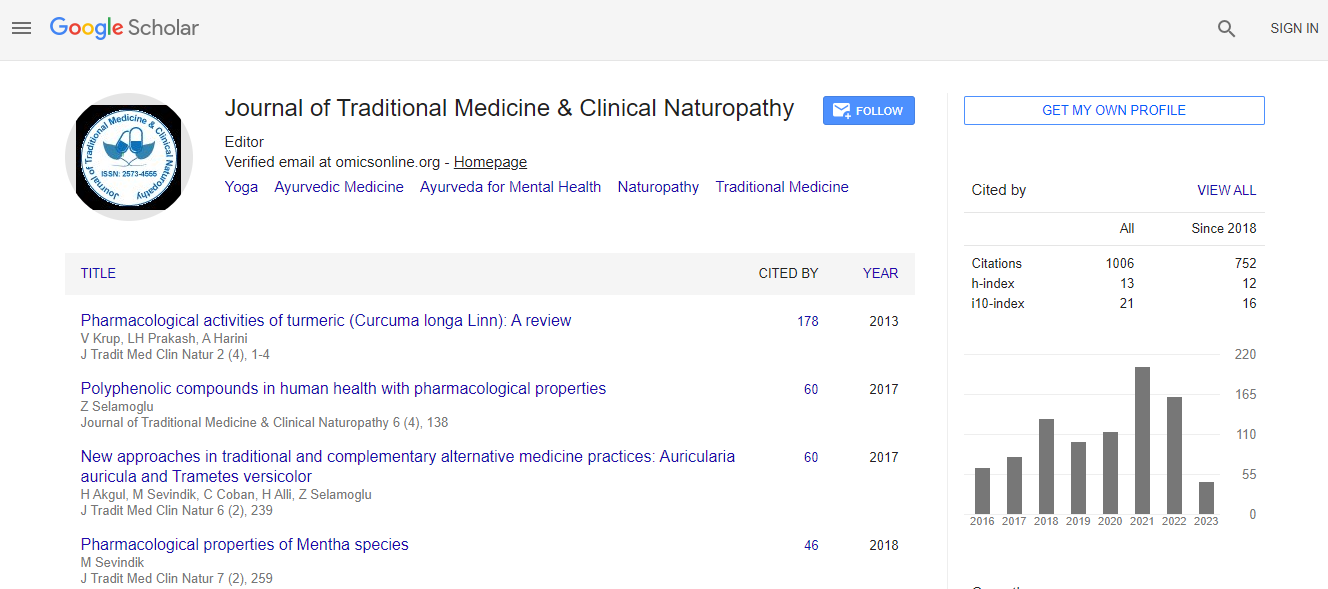Research Article
Effect of Preparation Method on Antioxidant Activity of Ayurvedic Formulation Kumaryasava
| Rahul Manmode1*, Jagdish Manwar2, Mustafa Vohra3, Satish Padgilwar2 and Nitin Bhajipale2 | |
| 1Department of Chemistry, University of Massachusetts, Lowell-01854, USA | |
| 2Department of Quality Assurance, Institute of Pharmacy, Akola-444 004, India | |
| 3Department of Alcohol Technology, Vasantdada Sugar Institute, Pune-412 307, India | |
| Corresponding Author : | Dr. Rahul Manmode Department of Chemistry, 1st University Avenue University of Massachusetts Lowell, Lowell, USA Tel: +001-978-934-3732 E-mail: rahulmanmode@gmail.com |
| Received September 28, 2012; Accepted October 26, 2012; Published October 29, 2012 | |
| Citation: Manmode R, Manwar J, Vohra M, Padgilwar S, Bhajipale N (2012) Effect of Preparation Method on Antioxidant Activity of Ayurvedic Formulation Kumaryasava. J Homeop Ayurv Med 1:114. doi: 10.4172/2167-1206.1000114 | |
| Copyright: © 2012 Manmode R, et al. This is an open-access article distributed under the terms of the Creative Commons Attribution License, which permits unrestricted use, distribution, and reproduction in any medium, provided the original author and source are credited. | |
Abstract
Kumaryasava is an alcoholic Ayurvedic formulation prepared by the fermentation of Aloe vera. Flowers of Woodfordia fruticosa are added as inoculums for fermentation process. The aim of the present investigation to find the effect of its preparation method on antioxidant activity of Kumaryasava. Three different formulations of Kumaryasava were prepared by fermentation using three different inoculums viz. Woodfordia fruticosa flowers, Madhuca indica flowers and yeast Saccharomyces cerevisiae SC1011. During fermentation process, relationship between alcohol generation and sugar utilization in each formulation was studied. In vitro antioxidant activity of all formulations was evaluated by 1,1-diphenyl-2-picryl hydrazyl (DPPH) scavenging, hydrogen peroxide scavenging and total reducing power. The results were compared to standard antioxidant ascorbic acid. All the tested formulations showed marked in vitro antioxidant activity in which WFKA (W. fruticosa flowers based Kumaryasava) showed prominent activity. Obtained IC50 values of WFKA in DPPH scavenging assay, hydrogen peroxide scavenging assay and total reducing power assay were 481.78, 50.13 and 49.60, respectively. From the results it is concluded that formulation (WFKA) prepared by traditional method showed higher in vitro antioxidant activity relative to others.

 Spanish
Spanish  Chinese
Chinese  Russian
Russian  German
German  French
French  Japanese
Japanese  Portuguese
Portuguese  Hindi
Hindi 
